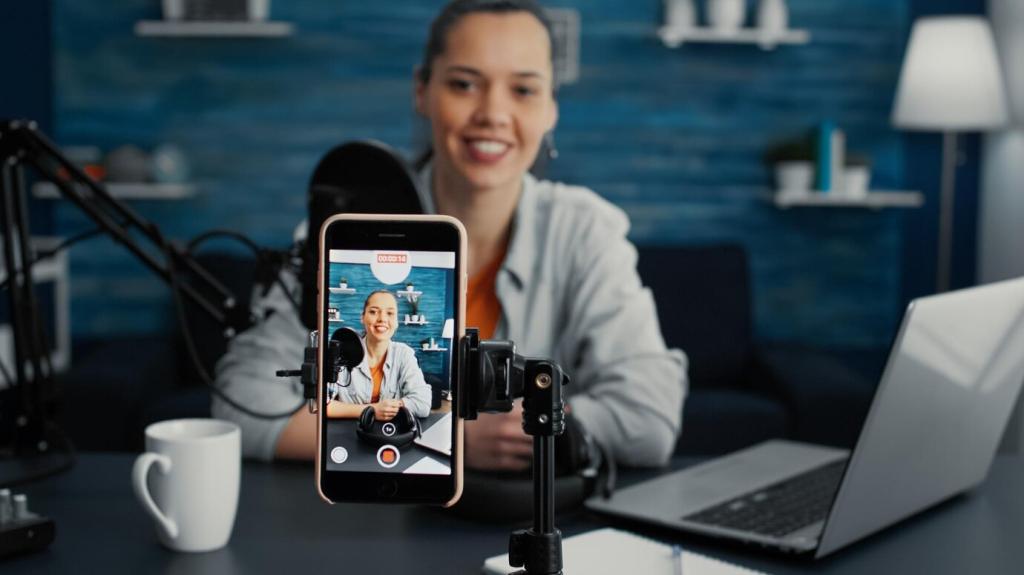Chosen theme: Designing Tutorials for Optimal Self-Learning. Discover how to craft guides that respect attention, boost retention, and spark curiosity so independent learners move forward with confidence. Share your experiences, ask questions, and subscribe to keep exploring learner-first design together.
Start With the Brain: Principles That Make Learning Stick
Limit extraneous complexity, introduce one new idea at a time, and use worked examples before asking for full performance. A designer named Maya cut dropout rates by sequencing exercises from recognition to recall, then creation, pairing each step with a minimal, focused explanation.


Start With the Brain: Principles That Make Learning Stick
Instead of long summaries, add quick checkpoints that ask learners to retrieve critical ideas from memory. Short prompts, tiny quizzes, and generation tasks strengthen recall. Invite readers to try a one-minute recap at the end of each section and share how it changed their understanding.
Structure That Guides Autonomy
Explicit Outcomes and Prerequisites
Write outcomes as can-do statements and list the exact knowledge required to begin. This prevents frustration and sets a realistic bar for entry. Ask readers to post their current skill level and which outcomes they want most, so we can tailor example paths in upcoming posts.
Micro-Steps and Visible Milestones
Chunk lessons into fifteen-minute cycles with a single, demonstrable win. Use checklists and a simple progress tracker learners can copy. One community member reported completing a long-postponed Python module after switching to tiny milestones and celebrating each small success with a personal note.
Frictionless Onboarding and First Success
Keep setup light: minimal tools, a quick-start template, and a first task that validates progress within minutes. The earliest success is motivational rocket fuel. Invite readers to comment on the fastest first-win activity they have seen, so we can feature it for others.
Motivation by Design, Not by Luck
Offer optional paths and difficulty toggles while keeping a recommended route for momentum. Provide choices with clear trade-offs. Readers can vote on which branching pattern they prefer—depth-first or breadth-first—and we will publish a template aligned with the most requested format.
Multimedia, Accessibility, and Clarity
Use text for skimmable steps, video for demonstrations that benefit from motion, and audio for reflective segments. Always provide transcripts and downloadable assets. Ask readers which medium helps them troubleshoot fastest, and we will refine our examples around that preference.

Feedback Loops Without a Live Instructor
Provide criteria that define acceptable work and a few annotated examples highlighting common pitfalls. Clear standards enable honest self-assessment. Invite readers to request an exemplar for a tricky step, and we will produce one that clarifies expectations without giving away the process.
Feedback Loops Without a Live Instructor
Include linting rules, test suites, or solution checkers where possible. Pair them with reflection questions that ask why an approach worked. Encourage learners to keep a brief learning log and share a single surprising insight after each module to reinforce metacognition.
Feedback Loops Without a Live Instructor
List predictable mistakes, explain what they look like, and provide a quick triage checklist. Treat errors as data, not failures. Ask readers to submit their most puzzling bug or misunderstanding; we will add it to a living troubleshooting section with credit.
Personalization and Adaptive Pathways
Open with a short, non-graded pretest. Use results to suggest a route: foundations, fast-track, or challenge mode. Learners still choose, but guidance reduces guesswork. Share whether diagnostics felt accurate, and we will iterate our branching logic together.
Add side-quests, enrichment boxes, and deeper readings that never block progress. Novices move forward, experts dive deeper. This flexibility keeps mixed audiences engaged. Tell us which advanced detour you want next, and we will author a focused mini-guide to match.
Provide a lightweight tracker, spaced-review reminders, and end-of-module summaries learners can save. Visible progress sustains motivation during harder sections. Subscribe for printable trackers and reply with your preferred review cadence so we can tune reminders to real habits.
